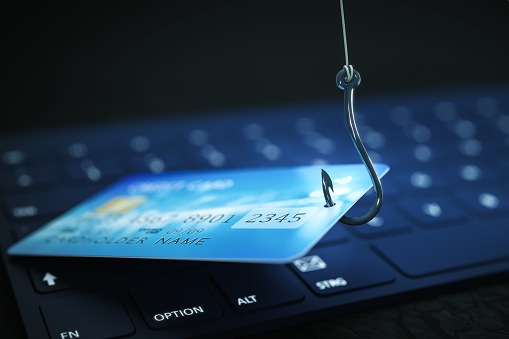Featured
- Get link
- X
- Other Apps
WHAT IS PHISHING AND HOW CAN YOU AVOID IT
The phising is unfortunately an increasingly widespread practice. And there are not a few companies that end up being victims of this type of practice. It is important that we are informed about these deception techniques that cybercriminals use to steal our data or even access our bank account.
In this post we will elucidate in detail what phishing is
and we will give you a series of computer security tips so that you can avoid
it.

What is phishing
Cybercriminals can use various techniques to try to collect
data from third parties. One of them is through brute force attacks. That is,
through programs that are testing different password possibilities to access
the user account of a third party. The other most widespread technique is
through social engineering or deception.
This last technique is the most effective one, since it is
based on the good faith of the user to ensure that he ends up giving us,
without realizing it, access to his data.
Phishing is therefore a social engineering technique aimed
at collecting personal data from people and companies. The objective? Steal
their access to email accounts, social networks, bank accounts, etc. in order
to carry out their plans.
How to recognize phishing
It can all start with a seemingly official email. From
Correos de España, Banco Santander, even from the Tax Agency ... But it is not
a real mail, even if they include the logo and give it an appearance of
officiality.
Usually this email tells you to enter a website and take
some action, such as providing data. Being official bodies or recognized
institutions, we tend to give them more credibility. They even use the fear
factor to get us to respond more quickly. "You have to solve this problem
within 48 hours", "We have detected an error in ...",
"Click here to provide us with your information so that we can send you
the package ...", etc.
All lie. And we can discover it very easily, checking that
the email address of the person who sent it to us is not the real address of
the Treasury, Post Office or the bank in question. It is not even hosted on the
official domain of that institution, but is usually just an email that looks
like it.
And let's not talk anymore when the e-mails they give us
have spelling mistakes, texts written in quite poor Spanish appear or they tell
us to do implausible things, without head or tail, as long as we enter a
website, or they we provide data.
How to avoid phishing?
We have said that phishing is based on the good faith of the
user. Therefore, the first step to avoid phishing is to become suspicious. No
official body, not a bank, is ever going to lose you if you give them your PIN
number by email, ever. They do not have certification that you are the one who
has accessed that email.
Therefore, the communications that they make to you will be
done many times by other safer ways, in addition to the fact that they will
never request secret information, which only you know and that they do not need
at all, regardless of any supposed error, that in everything If this is the
case, they could ask you by phone or by letter .
Second, always look at who it is that sends you the mail.
The logo does not matter, nor the color of the e-mail, nor the content. It
matters who the sender is and if that email is really from who it claims to be,
or on the contrary, it is from a scammer.
Third, at the slightest sign of doubt, never click on any
link in that email. Which, on the other hand, should have reached the spam
folder if we have a good spam filter . Sometimes the mail will reach our inbox,
something that can be very common in some low-quality private mail servers that
do not control this type of mass mailings very well.
Fourth, if you have any doubts, you can do something as
simple as contacting the affected institution to confirm whether they have sent
the email or not. Enter their website, find a contact telephone number or an
e-mail and tell them what they have communicated to you by mail and ask for
confirmation.
Phishing doesn't just attack email
Be careful, because phishing doesn't necessarily always
happen through email . You can fall into some trap even when you are browsing
the Internet. For example, you enter a fake page, which usually does not have
an adequate security protocol.
User accounts that are entered through http and not https,
or online stores that do not have an SSL certificate when making transactions,
imply a high risk for the user.
What to do if I have been a victim of phishing?
In case you have been a victim of phishing, simply contact
the Police to make a report. Before, disconnect from the networks that you
think may have been affected and check through these institutions if you have
suffered any theft or fraudulent payment in your bank account, or an identity
theft.
- Get link
- X
- Other Apps
Popular Posts
Top Health News: Mental Health, Technology, and Other Topics
- Get link
- X
- Other Apps

